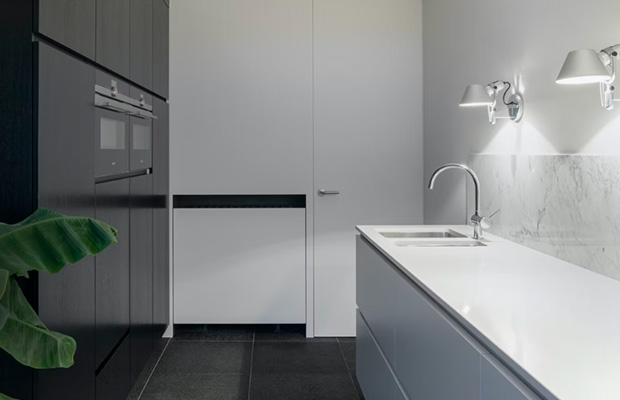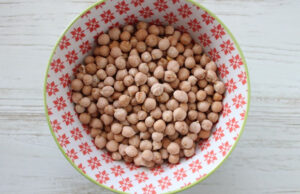There is no denying marble’s ability to significantly increase any space’s wow factor. Romans had a clear affinity for its natural splendor and beauty, as did countless Renaissance artists and architects. Sure, using marble for kitchen countertops has basically gone mainstream at this point, but what about using marble on the Kitchen floor?
Now the marble is one of the most elegant flooring materials you can choose for your kitchen. It has a feeling of wealth about it. The priciest and most stunning palaces, which frequently belonged to royalty, frequently contain marble. Mined from the earth, it is a natural substance. It is available in various hues and patterns. Marble kitchen floor tiles look very pretty, they add a sense of finesse to a kitchen and give the interiors an extra boost.
Table of Contents
Marble Changes Over Time
When you first think of marble flooring, bathrooms lined in veiny stone probably come to mind, but think again. The iron content in marble actually causes it to rust over time, especially when in high humidity, and yet, using marble in bathrooms and showers is somewhat common nowadays. Natural stone, such as marble, can function just as well as kitchen flooring because it develops a patina over time, adding an earthy element that will change as it ages. So, if you’re thinking about installing a marble kitchen floor, the first thing to do is decide if you’re okay with the idea of it changing over time. Like any natural stone, marble will erode over time, and if you’re not careful with maintenance, you might end up speeding up the deterioration. You might want to look into other low-maintenance kitchen flooring options.
Constant Maintenance For Marble
White marble, like Carrara, is on the less expensive side (even more affordable than quartz or granite) while still creating a sense of old-world grandeur, making your kitchen appear bigger and brighter as it refracts sunlight beautifully. But bear in mind that white marble varieties require more frequent maintenance than darker varieties because they are more likely to stain. Compared with granite, marble is much softer and more porous, making it more susceptible to scratches and stains. To maintain marble, whether it be countertops or tile flooring, be sure to use gentle cleaners, avoiding any acidic products that may damage the material. A soft chamois cloth should be used to gently polish marble after cleaning it until it has a sheen. To finish, buff the surface with premium car wax to protect it and keep the shine. The fact that marble floors need to be cleaned and polished on a regular basis is by far the biggest downside if you want them to stay true to color and last as long as possible.
Pros of Marble Floors in Kitchens
There are several noteworthy benefits to marble as a flooring material in kitchens:
Unique color and pattern: Marble tiles and slabs are available in a wide variety of colors, but the quarrying and manufacturing process is such that each piece of marble varies slightly in color and veining. No two marble floors ever look exactly the same, even though tiles made from the same large slabs will have an overall uniformity of color and similarity of the pattern. One of the main factors contributing to marble’s high value as a building material is the distinctiveness of each marble floor.
Polish: Unlike many other stone flooring materials, marble can take that take an extremely high polish. This enables manufacturers to polish marble to a very smooth, shiny, and aesthetically pleasing finish. The colors in the stone are also likely to be enhanced and made more striking by polishing.
Light transmission: Marble’s tendency to be slightly translucent is one of the reasons it has been used so frequently in famous sculptures. Some lighter-colored marble materials can have their surface illuminated when used for flooring, giving the material a slight glow. The play of light across the stone’s surface can be quite beautiful, even in darker marbles.
Natural material: The earth itself is where marble is a completely natural substance. Those who favor natural materials over synthetic ones highly value this quality. Although marble cannot be considered biodegradable, it is a natural material that can be recycled and does not pollute the environment once it has served its purpose.
Cons of Marble Floors in Kitchens
High cost: Individual 12 x 12-inch marble tiles can cost upwards of $5 to $10 per square foot, making it one of the more expensive kitchen flooring options available. The cost may even increase when dealing with designer mosaics, larger tiles, slabs, and non-standard sizes.
Can be scratched: Marble is a relatively soft stone, and polished marble tile is relatively easy to scratch. The shifting of furniture or even pets can scratch a marble floor over time. It is a difficult task to repolish a marble tile that has been scratched, so professional assistance is usually needed.
Can be stained: Due to its slightly porous nature and slightly alkaline composition, marble is susceptible to chemical reactions that result in stains that are quite visible when an acidic substance interacts with it. In a kitchen, it’s possible for acidic liquids like sauces and fruit juices to splash and spill onto the floor, endangering the marble’s ability to resist permanent staining.
Complicated maintenance: A surface-barrier sealing chemical that the manufacturer recommends must be used to properly seal a marble kitchen floor in order to prevent stains. This covers the marble with an imperceptible layer that shields it from acidic and stain-causing substances. Every 6 to 12 months, you will need to reapply this sealant to the marble floor in order to keep the tiles looking good.
Expensive and difficult to replace: Marble tile is pricy to install and reasonably challenging to take out. While proper maintenance should ensure that your marble kitchen floor lasts for years, when it does come time to replace it, you may find that installing a new floor directly over the marble is easier than trying to remove and replace it.
Coldness, hardness. Like ceramic tile, marble flooring is a naturally chilly building material. In colder climates, walking on a marble floor without some sort of radiant heating system built in can be a little uncomfortable. Any breakable object that falls will shatter immediately because marble floors are also very hard. Worse still, the marble tile itself might crack.
Environmental concerns: Despite the fact that marble is an entirely natural product, environmental purists point out that the use of mining machinery and quarrying saws results in carbon emissions and that the transportation of these heavy materials over great distances overseas requires a significant amount of fossil fuels.
An Alternative to Natural Marble
If the price and cons of marble make you reconsider, you might want to think about using porcelain tile as a flooring substitute. Modern porcelains can be fabricated to look remarkably similar to other building materials, such as wood, marble, granite, and other types of stone. A porcelain tile floor can be virtually indistinguishable from a true marble floor costing much, much more because faux-marble porcelain tiles are available in large sizes and a variety of colors and vein patterns. Porcelain tile resists stains well and is typically much less slippery. Porcelain tile has a less environmental impact because it can be produced locally and does not require quarrying.


